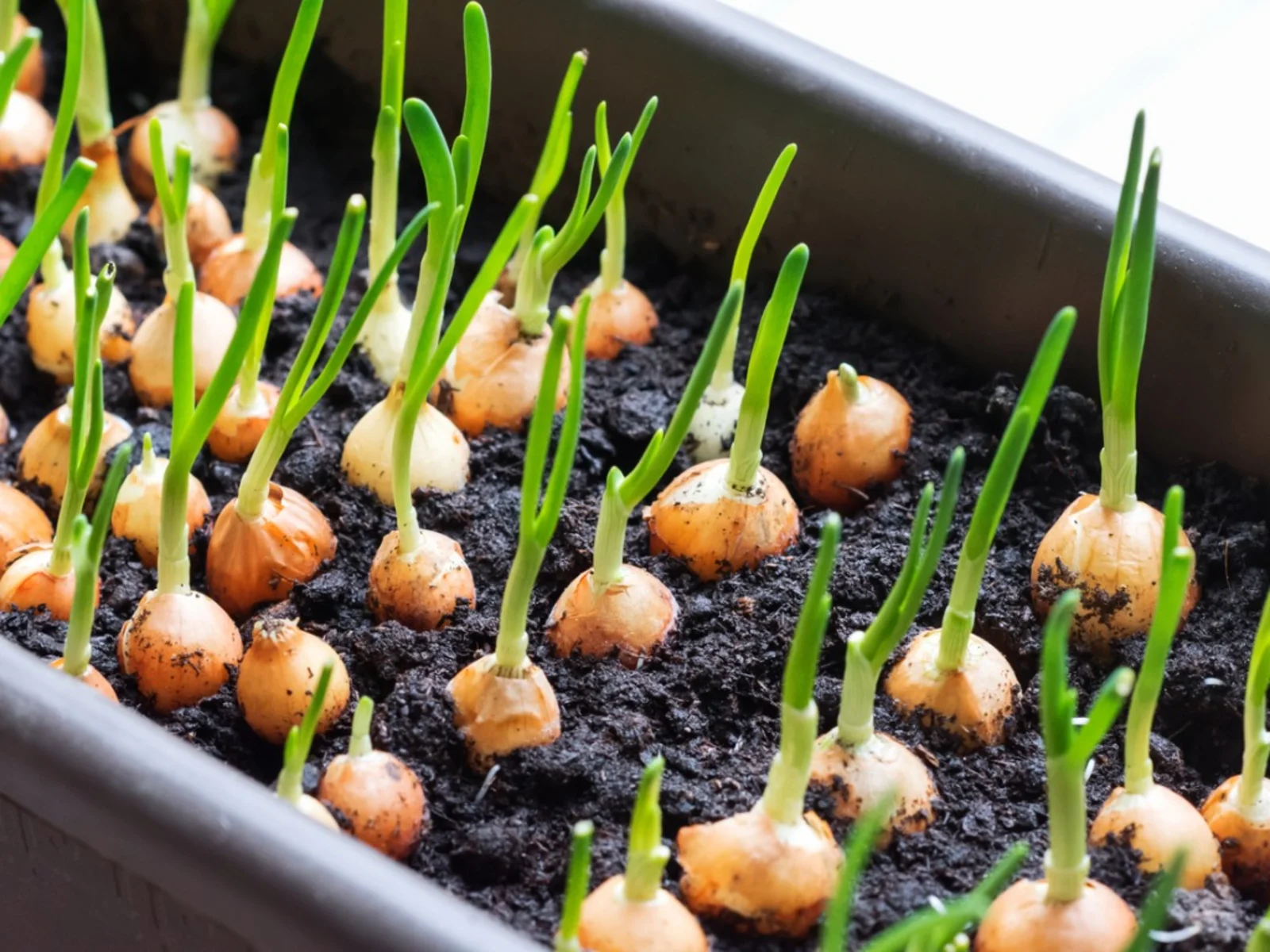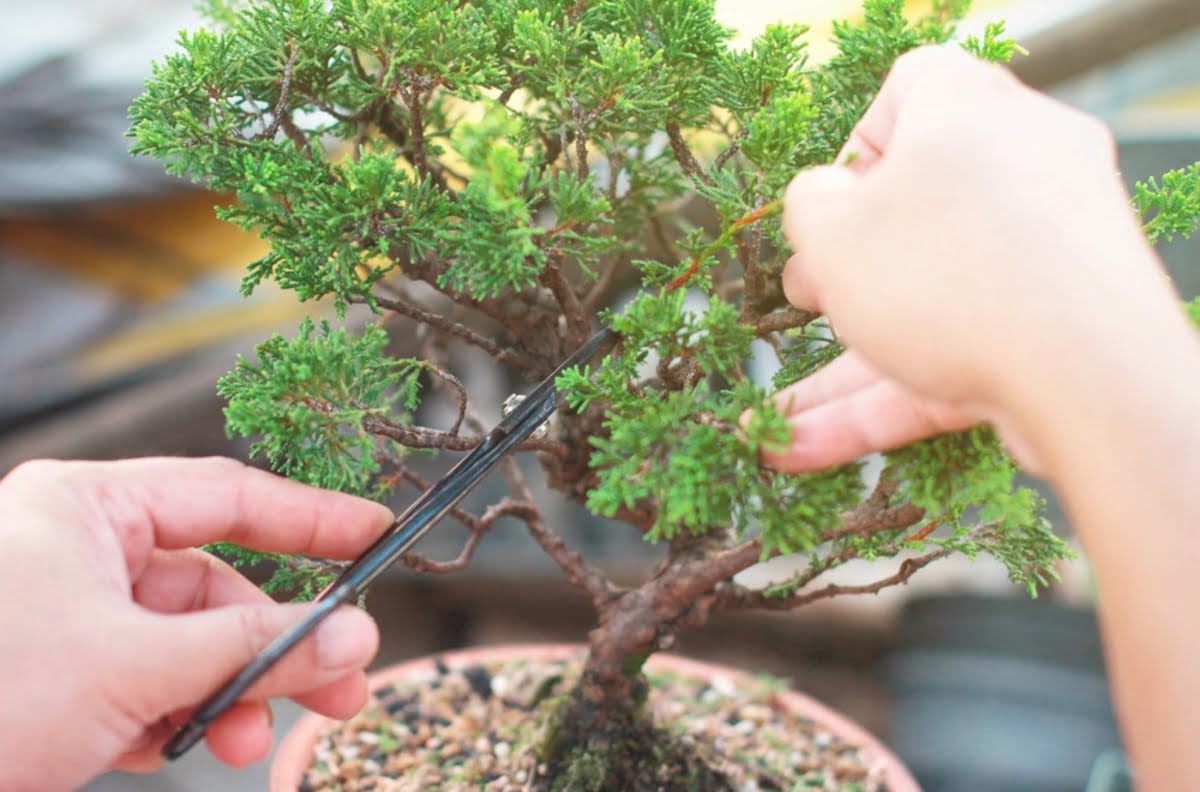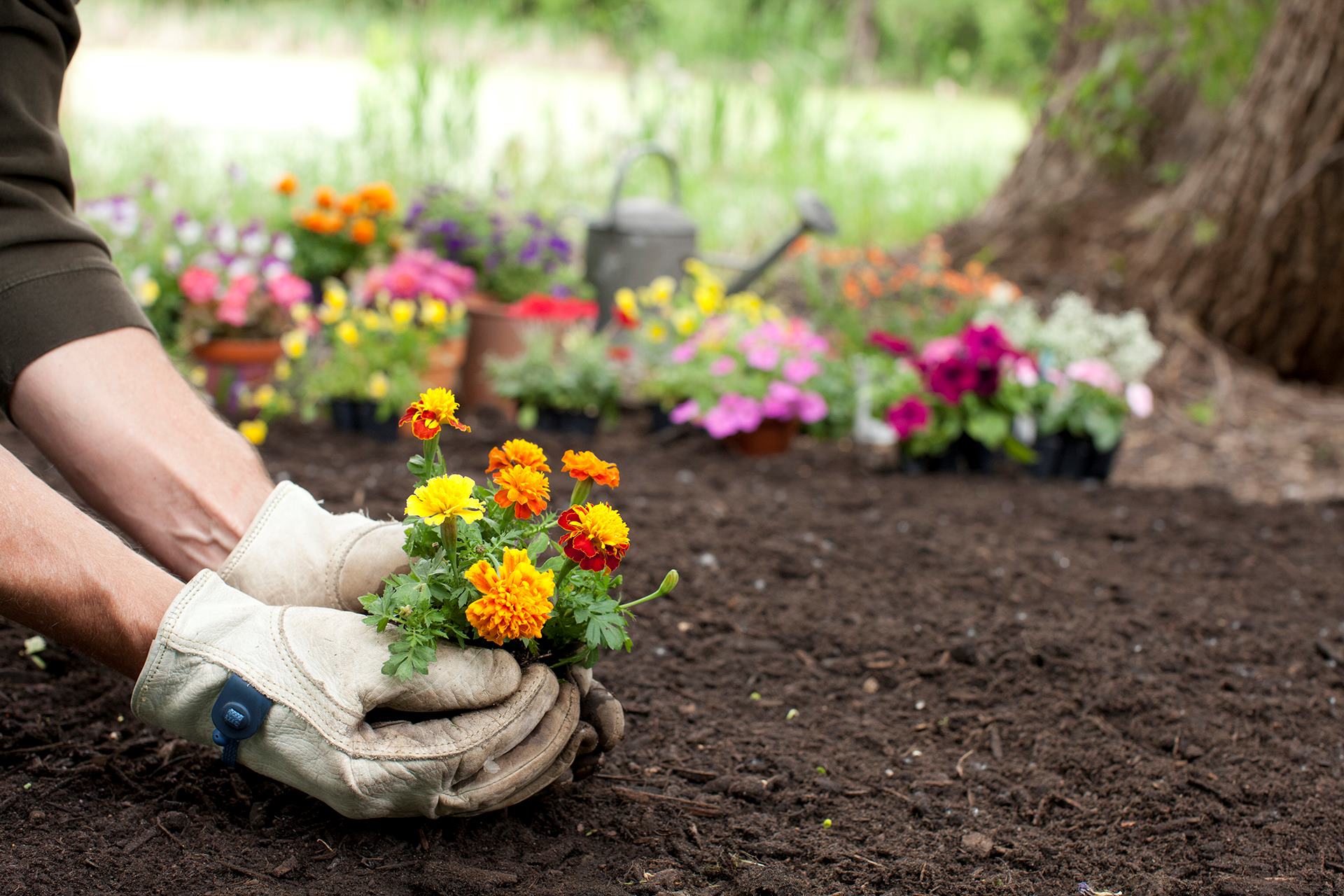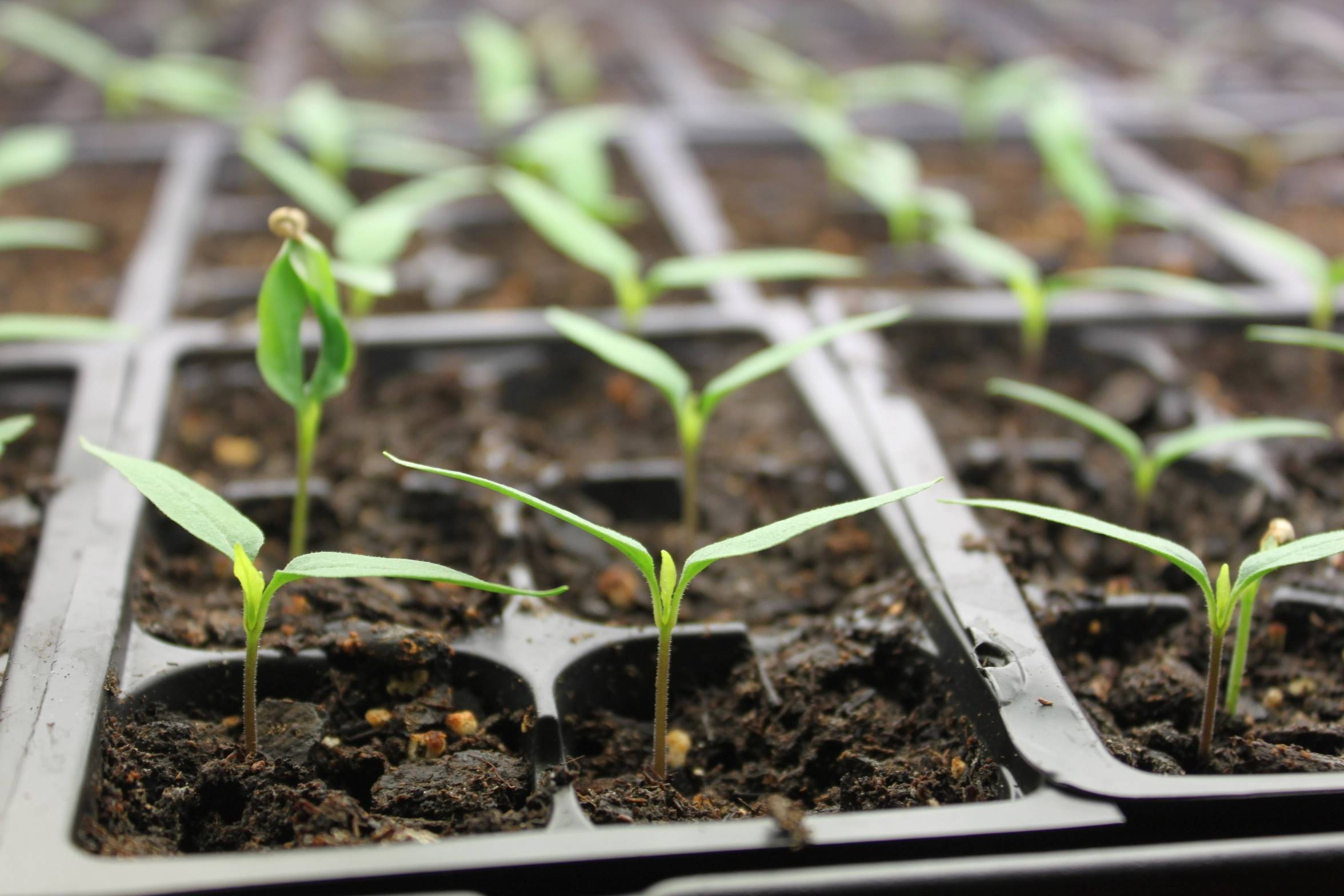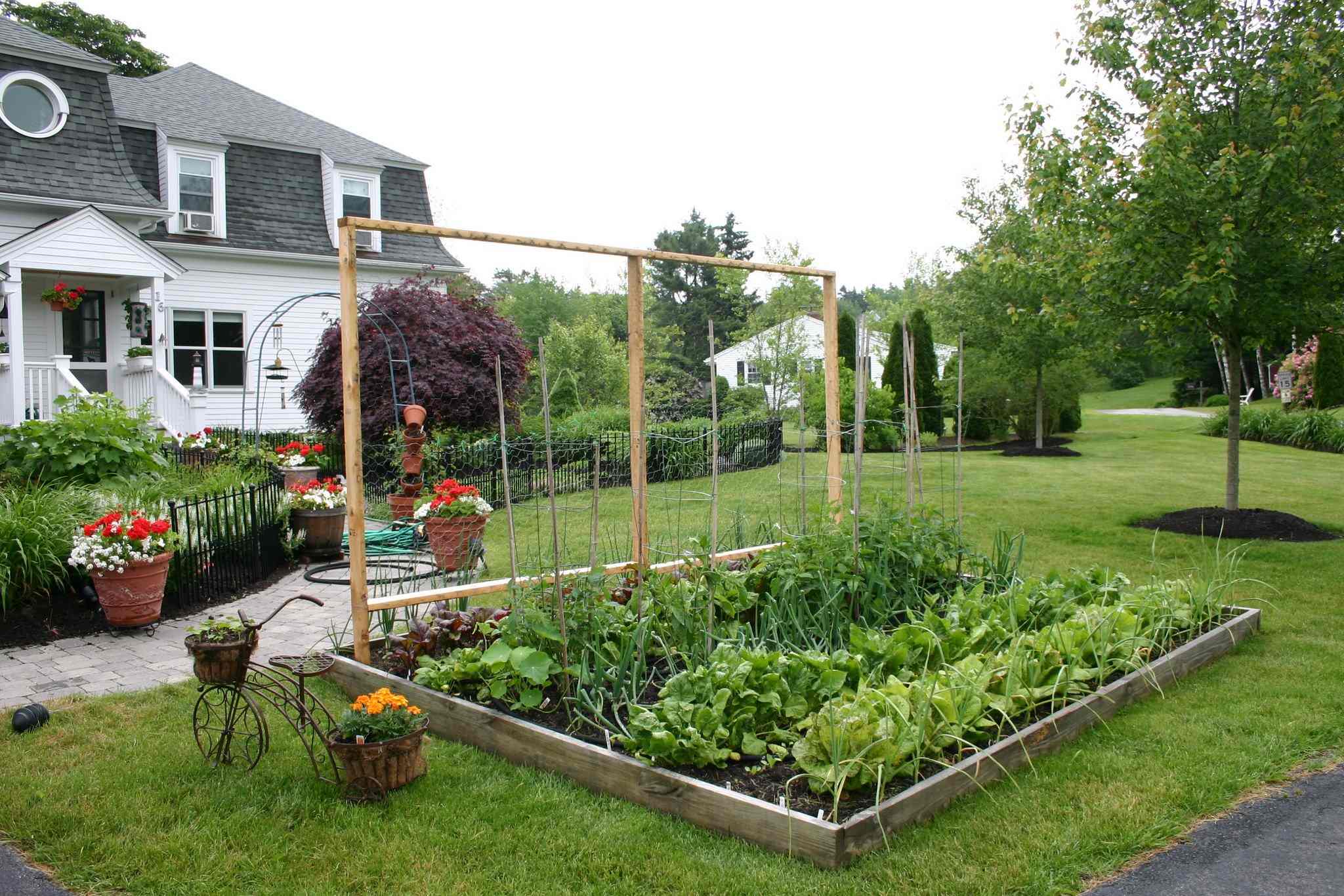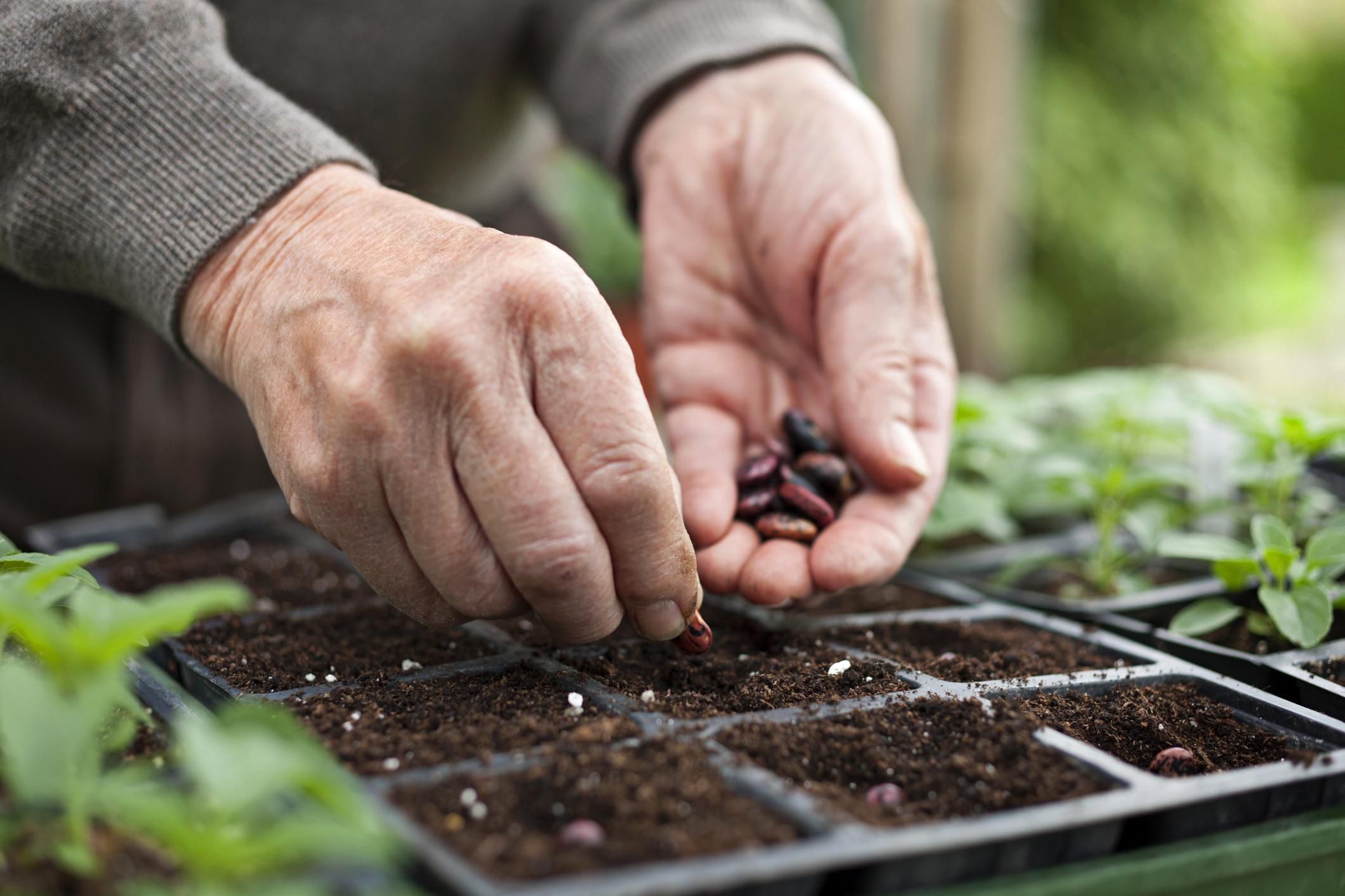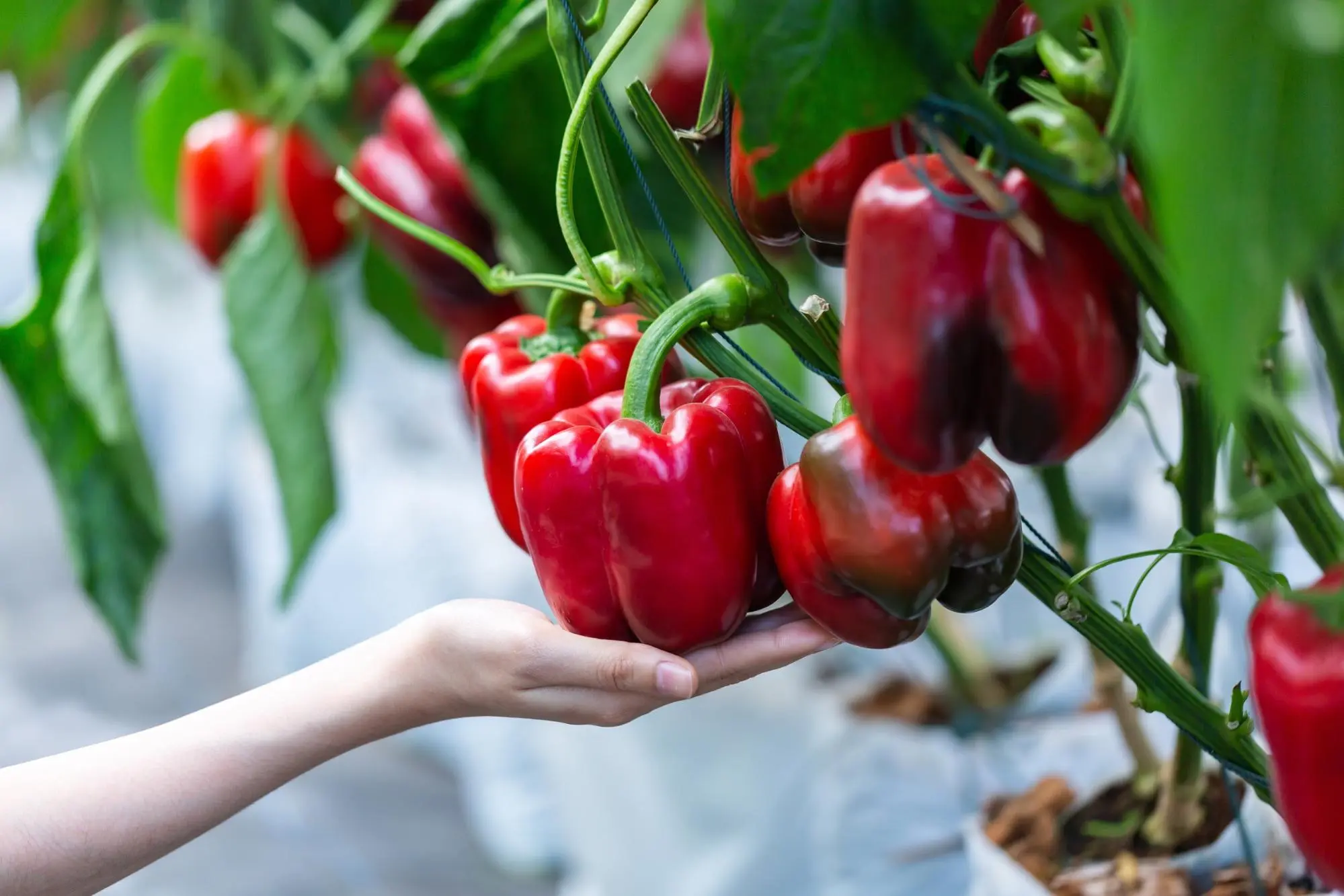Home>Types of Gardening>Ornamental Gardening>When Will The Trees Start Blooming


Ornamental Gardening
When Will The Trees Start Blooming
Modified: January 22, 2024
Discover the perfect time for your ornamental garden to burst into bloom with our expert guide on when trees start blooming.
(Many of the links in this article redirect to a specific reviewed product. Your purchase of these products through affiliate links helps to generate commission for Chicagolandgardening.com, at no extra cost. Learn more)
Table of Contents
Introduction
Gardening enthusiasts and nature lovers eagerly anticipate the beautiful sight of trees bursting into bloom. The vibrant colors and fragrant blossoms bring joy and a sense of renewal to outdoor spaces. However, have you ever wondered when exactly these trees start their marvelous display of flowers?
The timing of tree blooming can vary depending on several factors, including climate, species, and environmental conditions. Understanding these factors can help gardeners and enthusiasts plan their ornamental gardens and appreciate the natural beauty that unfolds each year.
In this article, we will explore the various influences that determine the timing of tree blooming. From climate and weather patterns to day length and genetics, we will uncover the intricate mechanisms behind this awe-inspiring phenomenon.
Additionally, we will delve into the signs that indicate trees are about to bloom, highlighting some early and late blooming tree species that you can introduce into your garden to extend the blooming season.
So, let us embark on a journey through the fascinating world of ornamental gardening and discover when the trees will start blooming.
Factors Affecting the Timing of Blooming
Several factors play a crucial role in determining when trees start blooming. Understanding these factors can help gardeners and enthusiasts predict and plan for the spectacular display of flowers in their ornamental gardens. Let’s explore the key influences:
- Climate and Weather Influences: Climate and weather patterns have a significant impact on the timing of tree blooming. Trees tend to bloom earlier in regions with mild winters and early springs, while those in colder climates may experience a delayed blooming period.
- Day Length and Sunlight: The length of daylight and the intensity of sunlight are essential triggers for tree blooming. Trees often rely on a specific number of daylight hours to signal the onset of blooming. As the days grow longer, it signals to the trees that it’s time to awaken from their dormant state and burst into stunning blossoms.
- Environmental and Soil Conditions: The environmental conditions, including temperature, humidity, and soil moisture, influence the timing of tree blooming. Certain trees require specific environmental cues, such as a drop in temperature or a period of rainfall, to initiate blooming.
- Tree Species and Genetics: Each tree species has its own genetic programming that influences the timing of blooming. Some trees are genetically predisposed to bloom earlier in the season, while others may wait for warmer temperatures or specific climatic conditions.
By considering these factors, gardeners can make informed decisions when selecting tree species for their gardens. It’s important to choose trees that are well-suited to the local climate and can thrive in the specific environmental conditions of the area.
Now that we understand the various influences that impact the timing of tree blooming, let’s explore the signs that indicate when trees are about to burst into their splendid display of colors.
Climate and Weather Influences
The timing of tree blooming is significantly influenced by climate and weather patterns in a particular region. Trees respond to the changing seasons, and their blooming time can vary depending on the local climate. Here are some key climate and weather influences:
Temperature: Temperature fluctuations play a crucial role in tree blooming. Most trees require a certain number of hours of exposure to cool temperatures during the winter months to break their dormancy and prepare for blooming in the spring. In regions with milder winters, trees may bloom earlier compared to areas with colder temperatures and longer periods of frost.
Frost: Frost can be detrimental to blooming trees. Late spring frost can damage delicate buds and flowers, resulting in a shortened blooming period or even no blossoms at all. In regions prone to late frost, gardeners may need to take protective measures, such as covering the trees or providing additional shelter.
Rainfall: Adequate rainfall can have a positive impact on tree blooming. Trees require sufficient moisture in the soil to support healthy growth and initiate blooming. A lack of rainfall or prolonged drought can delay the blooming process and result in fewer flowers.
Wind: Strong winds can disrupt the blooming process by damaging delicate buds and causing premature flower drop. Windy conditions can also interfere with pollination, which is crucial for the formation of fruits and seeds.
Microclimates: Microclimates within a region can affect the timing of tree blooming. For example, urban areas tend to have slightly warmer temperatures compared to rural areas due to the heat absorbed and retained by buildings and pavement. As a result, trees in urban environments may start blooming slightly earlier than those in surrounding rural areas.
Understanding the climate and weather influences can help gardeners anticipate when trees are likely to start blooming in their specific geographical region. By considering these factors, gardeners can also choose tree species that are better adapted to their local climate and environmental conditions.
Now that we have explored the impact of climate and weather on the timing of tree blooming, let’s delve into the role of day length and sunlight.
Day Length and Sunlight
The length of daylight and the intensity of sunlight are crucial factors that influence when trees start blooming. Trees have an innate sense of time and utilize changes in day length to regulate their developmental processes. Here’s how day length and sunlight play a role in tree blooming:
Photoperiod: Photoperiod, or the duration of daylight in a 24-hour period, serves as a critical cue for trees to initiate blooming. Certain tree species have specific photoperiod requirements, signaling them to transition from a dormant state to an active growth phase. As the days grow longer in spring, reaching the optimal photoperiod threshold, trees receive the signal to start the blooming process.
Chilling Requirement: Along with the length of daylight, trees often have a chilling requirement, which refers to the number of hours or days of exposure to cold temperatures during winter. The combination of a sufficient chilling period and increasing day length prompts the trees to break dormancy and bloom when the conditions are favorable.
Intensity of Sunlight: In addition to the duration of daylight, the intensity or quality of sunlight also influences the timing of tree blooming. Trees require a certain amount of sunlight, particularly the full spectrum of light, which includes the critical blue and red wavelengths. Adequate sunlight promotes photosynthesis, which fuels the tree’s growth and blooming process.
Latitude and Seasonal Variations: The timing of tree blooming can vary depending on the region’s latitude and the seasonal changes that occur. In regions closer to the equator, where there are minimal variations in day length throughout the year, trees may bloom at different times compared to regions with distinct seasons and more significant variations in day length.
By understanding the relationship between day length, sunlight, and tree blooming, gardeners can keep track of the changing seasons and anticipate when their trees will start blooming. These natural cues provide valuable insights for timing pruning, fertilization, and other essential gardening activities.
Now that we have examined the significance of day length and sunlight, let’s explore the impact of environmental and soil conditions on tree blooming.
Environmental and Soil Conditions
The environmental and soil conditions in which trees grow play a vital role in determining when they start blooming. These conditions provide essential resources and cues for trees to initiate their blooming phase. Here are some key factors to consider:
Temperature and Humidity: Trees thrive in specific temperature and humidity ranges that support healthy growth and blooming. Warmer temperatures and moderate humidity levels are generally favorable for the blooming process. Extreme heat or arid conditions can delay or inhibit blooming, as trees focus their energy on survival rather than reproductive efforts.
Soil Moisture: Adequate soil moisture is essential for tree growth and blooming. Sufficient water availability ensures that trees have the necessary resources to support their metabolic processes and flower production. A lack of water can cause stress to the trees, potentially leading to delayed or reduced blooming.
Soil Nutrients: The availability of essential nutrients in the soil directly impacts tree health and blooming. Trees require a balanced supply of macronutrients (nitrogen, phosphorus, potassium) and micronutrients (iron, zinc, manganese, etc.) to support their growth and reproductive processes. Soil deficiencies or imbalances in nutrients can affect blooming time and the overall quality of the flowers.
Soil pH: The soil’s pH level, which measures its acidity or alkalinity, can also influence tree blooming. Different tree species have specific pH preferences, and an unsuitable soil pH can affect nutrient availability and uptake. Therefore, maintaining the appropriate pH level in the soil is crucial for promoting optimal tree health and blooming.
Air Pollution: High levels of air pollution can have detrimental effects on tree growth and blooming. Pollutants such as sulfur dioxide and nitrogen oxide can interfere with the tree’s physiological processes, including blooming. Trees growing in polluted areas may experience delays or abnormalities in blooming, affecting their overall aesthetic appeal.
By considering these environmental and soil conditions, gardeners can create favorable growing conditions for their trees, ultimately promoting healthy growth and timely blooming. Providing proper irrigation, maintaining soil fertility, and mitigating air pollution are essential steps to ensure successful tree blooming.
Now that we have explored the influence of environmental and soil conditions on tree blooming, let’s move on to the role of tree species and genetics.
Tree Species and Genetics
The timing of tree blooming can vary significantly depending on the species and genetics of the tree. Each tree species has its own unique genetic programming that determines the onset and duration of blooming. Here are some key factors related to tree species and genetics:
Genetic Predisposition: Certain tree species are genetically programmed to bloom earlier or later in the season. These genetic differences can be influenced by the tree’s natural habitat and evolutionary adaptations. Understanding the genetic predisposition of different tree species can help gardeners select trees that align with their desired blooming timeframe.
Species-Specific Requirements: Each tree species has specific environmental requirements for optimal blooming. Some trees may require a certain number of hours of chilling during winter, while others may need specific temperature ranges to initiate blooming. Understanding these species-specific requirements can help gardeners provide the necessary conditions for successful blooming.
Hybridization and Cultivars: Through hybridization and cultivar development, new tree varieties have been created with unique blooming characteristics. These hybrids and cultivars often exhibit improved disease resistance, enhanced blooming period, and unique flower colors. Gardeners can select hybrid or cultivated tree varieties that bloom earlier or later to extend the blooming season in their gardens.
Natural Variation: Even within a single species, there can be natural variation in the timing of blooming due to genetic diversity. Some individual trees within a species may bloom earlier or later than others. This variation can be influenced by factors such as microclimates, local environmental conditions, and genetic mutations.
By considering the genetic and species-specific characteristics of trees, gardeners can make informed choices when selecting trees for their gardens. They can choose species or cultivars that align with their desired blooming timeframe to create visually stunning and diverse displays.
Now that we have explored the influence of tree species and genetics on blooming time, let’s turn our attention to the signs that indicate when trees are about to burst into bloom.
Signs of Trees Starting to Bloom
As spring approaches, there are several signs that indicate trees are about to enter their blooming phase. These signs serve as exciting indicators for gardening enthusiasts eagerly awaiting the burst of colors in their landscapes. Here are some common signs of trees starting to bloom:
Bud Swelling: One of the first visible signs of blooming is bud swelling. As the days get warmer and longer, buds on the tree branches start to enlarge and show signs of growth. This swelling indicates that the tree is preparing for blooming and marks the beginning of the floral show.
Bud Break: Bud break occurs when the buds on the tree start to open, revealing the tiny leaves and flower clusters within. This stage signals the imminent arrival of blossoms and is a highly anticipated moment for gardeners and nature enthusiasts alike.
Color Change: As the buds continue to develop and mature, the colors begin to change. The initially tight and green buds may take on a range of colors, such as pink, white, red, or yellow, depending on the tree species. This vibrant color transformation is a clear indication that the tree is ready to showcase its blossoms.
Flower Petals Unfolding: Once the buds have fully transformed into flowers, the petals start to unfold. This captivating process can happen rapidly, with the petals unfurling to reveal the intricate beauty of the bloom. Watching the flowers open is a mesmerizing sight and a surefire sign that the tree is blooming.
Scent in the Air: Many blooming trees emit a delightful fragrance that fills the surrounding air. The scent becomes more prominent as the flowers open up, adding a sensory element to the visual spectacle. Gardeners and passers-by can often detect these fragrances, providing an indication that the trees are in full bloom.
Insect Activity: Tree blooming also attracts various pollinators, such as bees, butterflies, and hummingbirds. Increased insect activity around the tree is a telltale sign that the flowers are in full bloom and nature’s pollination dance is in motion.
By keeping an eye out for these signs, gardeners and nature enthusiasts can witness the magical transformation of trees from bud to full bloom. These observations not only provide visual enjoyment but also serve as a reminder of the beauty and resilience of nature.
Now that we have explored the signs of trees starting to bloom, let’s dive into some early blooming and late blooming tree species.
Early Blooming Trees
One of the delights of ornamental gardening is the ability to extend the blooming season by introducing early blooming trees into the landscape. These trees offer a burst of color and fragrance when other plants may still be in their dormant state. Here are some popular early blooming tree species:
Cherry Blossoms (Prunus spp.): Cherry blossom trees are synonymous with the arrival of spring. These stunning trees produce clusters of delicate pink or white flowers that create a mesmerizing display. Some popular cherry blossom varieties include Yoshino cherry (Prunus x yedoensis), Kwanzan cherry (Prunus serrulata ‘Kwanzan’), and Weeping Cherry (Prunus subhirtella).
Magnolias (Magnolia spp.): Magnolias are renowned for their large, showy flowers and early blooming habits. These trees come in various species and cultivars, offering a range of flower colors, shapes, and sizes. Some common early blooming magnolias include Saucer Magnolia (Magnolia × soulangeana), Star Magnolia (Magnolia stellata), and Jane Magnolia (Magnolia ‘Jane’).
Forsythias (Forsythia spp.): Forsythias are vigorous, deciduous shrubs that sport bright yellow flowers in early spring. These plants are often the first to bloom and create a striking contrast against the winter landscape. Forsythia x intermedia is a popular hybrid variety, while Forsythia suspensa is well-known for its cascading growth habit.
Flowering Dogwoods (Cornus florida): Flowering dogwoods are highly prized for their iconic beauty. These early blooming trees produce clusters of white or pink flowers, often surrounded by distinctive bracts. The Cornus florida ‘Cherokee Princess’ and Cornus florida ‘Cherokee Chief’ are popular cultivars known for their early blooming habits.
Magnolia stellata (Star Magnolia)
Peach Trees (Prunus persica): Peach trees not only provide delicious fruit but also offer early-season blooms. These trees burst into vibrant pink flowers, heralding the arrival of spring. Varieties such as ‘Early Elberta’ and ‘Redhaven’ are known for their early blooming and fruiting.
Some other early blooming trees include:
- Redbud (Cercis canadensis)
- Cornelian Cherry (Cornus mas)
- Japanese Apricot (Prunus mume)
- Witch Hazel (Hamamelis spp.)
- Serviceberry (Amelanchier spp.)
These early blooming trees serve as captivating focal points in gardens, offering a preview of the beauty that awaits as the rest of the landscape awakens. By incorporating these trees, gardeners can extend the blooming season and indulge in the splendor of spring.
Now that we have explored early blooming trees, let’s discover some late blooming tree species.
Late Blooming Trees
While early blooming trees bring a sense of anticipation for the arrival of spring, late blooming trees offer a grand finale to the blooming season. These trees add a touch of color and beauty when other plants may be winding down. Here are some notable late blooming tree species:
Japanese Maple (Acer palmatum): Japanese maples are renowned for their stunning foliage, but many varieties also provide late season blooms. These trees produce clusters of small, inconspicuous flowers in shades of red, pink, or yellow. Some late blooming Japanese maple cultivars include ‘Osakazuki’, ‘Sango Kaku’, and ‘Bloodgood’.
Tulip Tree (Liriodendron tulipifera): The tulip tree, also known as yellow poplar or tulip poplar, is a tall and majestic tree that graces late spring and early summer with its beautiful flowers. Its distinct tulip-shaped blossoms display a vibrant yellow hue and are an attraction for bees, butterflies, and hummingbirds.
Kousa Dogwood (Cornus kousa): Kousa dogwoods are known for their delayed blooming, making them a captivating sight in late spring or early summer. These trees produce stunning white or pink flowers surrounded by showy bracts. The Kousa dogwood variety ‘Milky Way’ is a popular late blooming cultivar.
Wisteria (Wisteria spp.): Wisteria vines are cherished for their cascading clusters of fragrant flowers. These late blooming beauties showcase their lavender, pink, or white blossoms in late spring or early summer. The Chinese wisteria (Wisteria sinensis) and Japanese wisteria (Wisteria floribunda) are common species that provide late season blooms.
Sweetbay Magnolia (Magnolia virginiana): The sweetbay magnolia is a graceful tree that showcases its fragrant, creamy white flowers in late spring to early summer. These blossoms attract various pollinators and emit a pleasant scent, adding to their charm. The sweetbay magnolia cultivar ‘Henry Hicks’ is a notable late blooming variety.
Some other late blooming trees include:
- Southern Catalpa (Catalpa bignonioides)
- Japanese Stewartia (Stewartia pseudocamellia)
- Fringe Tree (Chionanthus virginicus)
- Korean Mountain Ash (Sorbus alnifolia)
- Chinese Parasol Tree (Firmiana simplex)
These late blooming trees provide a captivating finale to the blooming season and extend the visual interest in gardens. Incorporating these trees into the landscape ensures a continuous display of colors and textures throughout the spring and summer months.
Now that we have explored late blooming trees, let’s wrap up our journey through the world of ornamental gardening.
Conclusion
Ornamental gardening offers a delightful opportunity to witness the magic of tree blooming unfold. Understanding the factors that influence the timing of blooming, such as climate, day length, environmental conditions, and genetics, allows gardeners and enthusiasts to plan their gardens and appreciate the beauty that each season brings.
By considering climate and weather influences, such as temperature and rainfall, gardeners can anticipate the timing of tree blooming in their region. Day length and sunlight serve as natural cues for trees to initiate blooming, while environmental and soil conditions provide the necessary resources for healthy growth and flower production.
Tree species and genetics play a significant role in determining when trees start blooming. Each species has its own genetic programming that influences the onset and duration of blooming. By selecting early blooming and late blooming tree species, gardeners can extend the blooming season in their landscapes, creating an ever-changing display of colors and textures.
Recognizing the signs of trees starting to bloom, such as bud swelling, color change, and scent in the air, allows gardeners to fully appreciate the progression of nature’s beauty. Early blooming trees like cherry blossoms and magnolias create a vibrant splash of color at the beginning of spring, while late blooming trees like Japanese maples and wisterias provide a captivating finale to the blooming season.
In the world of ornamental gardening, tree blooming is a spectacular event that brings joy and wonder to gardens and landscapes. By understanding the influences on blooming timing and incorporating a variety of early and late blooming trees, gardeners can create visually stunning and dynamic outdoor spaces that delight both themselves and visitors throughout the year.
So, embrace the magic of tree blooming and let your ornamental garden flourish with an array of colors and fragrances as nature unfolds its seasonal beauty.
